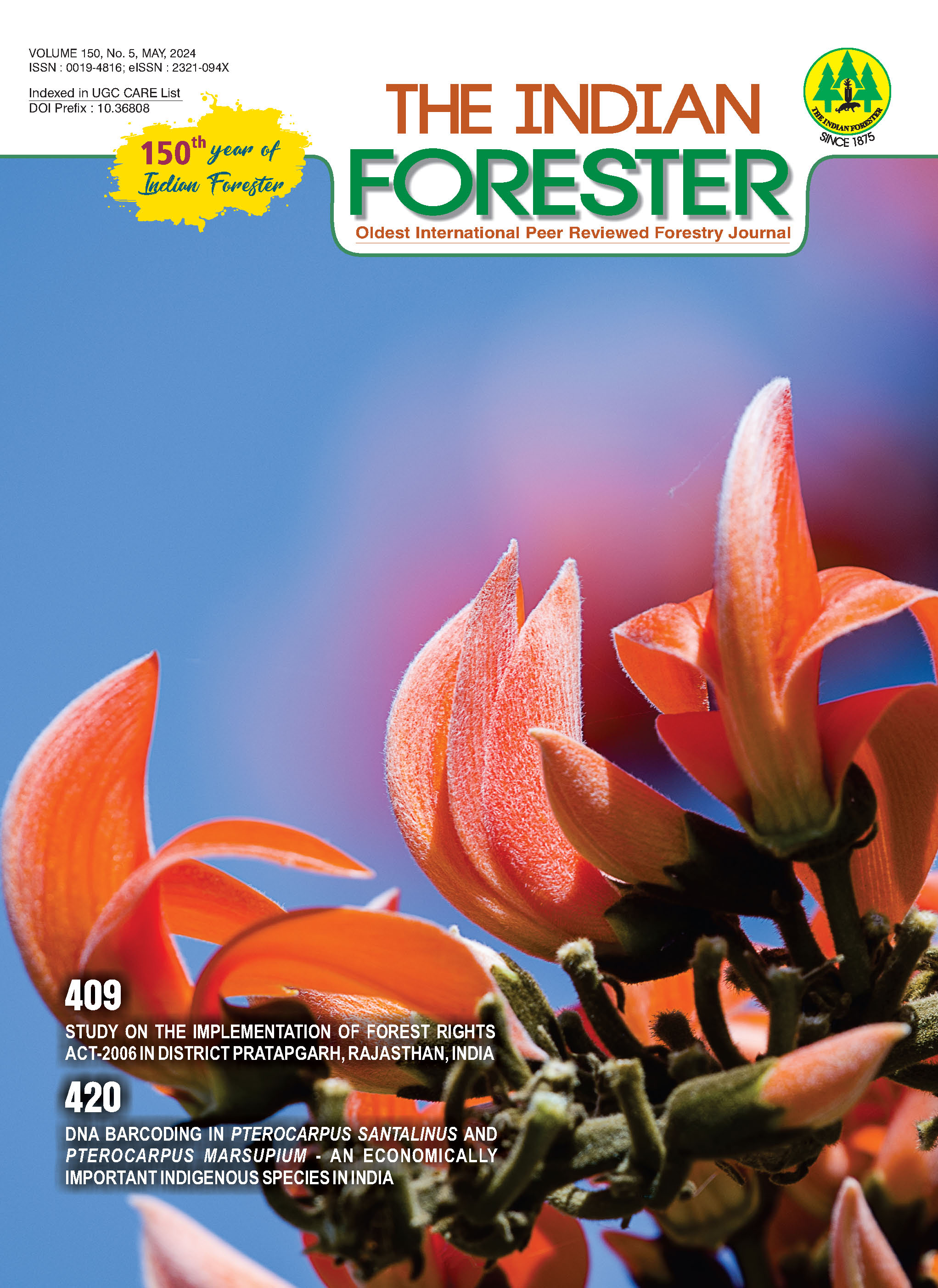Wild Edible Plants as a Nutrition- Medicine Continnum- An Ethnobotanical Survey of Gawali Tribe in Nanded District (Maharashtra) India
DOI:
https://doi.org/10.36808/if/2024/v150i5/170137Keywords:
Conservation, Diversity, Gawali community, Traditional medicines, Wild edible plantsAbstract
It is essential to document the knowledge of traditional food and medicines from rural and tribal people before it vanishes completely. The present study focused on the documentation of plant species used by Gawali community for food source. The indigenous knowledge from local people of Gawali tribe of Nanded district of Maharashtra was collected through questionnaires, personal interviews and field survey conducted during 2014-17. About 51 wild edible plant species of medicinal importance belonging to 31 families were recorded. People use these plants for edible purpose and for healing health related problems. These species show high diversity of medicinal applications. To create awareness on sustainable use of wild edible plants, their conservation and special attention is the need of time.
References
Alexiades M.N. (1996). Selected guidelines for ethnobotanical research: A Field Manual. The New York Botanical Garden.
Arya D., Tewari A. and Shah S. (2010). Erosion of Biodiversity knowledge between younger and older generation regarding plant identification and their uses in oak and pine dominated zone of Garhwal Himalaya, New York Science Journal, 3(6).
Canadian International Development Agency (2004). Canada's 3rd report to the UNCCD on initiative undertakes to combat desertification in Africa 2002-2004, United Nations Convention to Combat Desertification (UNCCD), CIDA.
Fentahun M.T. and Hager H. (2009). Exploiting locally available resources for food and nutritional security enhancement: wild fruits diversity, potential and state of exploitation in the Amhara region of Ethiopia, Food Security, 1(2): 207-219.
Ferreira F.S., Brito S.V., Ribeiro S.C., Saraiva A.A., Almeida W.O. and Alves R.R. (2009). Animal-based folk remedies sold in public markets in Crato and Juazeiro do Norte, CearaÂ, Brazil, BMC complementary and alternative medicine, 9(1): 1.
Food and Agriculture Organisation (2012). The state of food insecurity in the world: economic growth is necessary but not sufficient to accelerate reduction of hunger and malnutrition, FAO.
Godfray H.C.J., Beddington J.R., Crute I.R., Haddad D., Lawrence J.F., Muir, Pretty J., Robinson S., Thomas S.M. and Toulmin C. (2010). Food security- The challenge of feeding 9 billion people. Science, 327(5967): 812-818.
Gordon L.J. and Enfors E.I. (2008). Land degradation, ecosystem services and resilience of smallholder farmers in Makanya catchment, Tanzania. In Bossio, D. & Geheb, K. (Eds.) Conserving land, protecting water, CABI, Wallingford, 33-50.
Grivetti L.E. and Ogle B.M. (2000). Value of traditional foods in meeting macro and micro nutrient needs: The wild plant connection, Nutrition Research Reviews, 13(1): 31-46.
Heywood V. (1999). Use and potential of wild edible plants in farm households, FAO farm systems management series. Food and agriculture organisation.
Howard P. (2003). The major importance of 'minor' resources: Women and plant biodiversity, Russell Press, Nottingham, UK.
Jain A.K. and Tiwari P. (2012). Nutritional value of some traditional edible plants used by tribal communities during emergency with reference to Central India, Indian J. of Traditional Knowledge, 11(1): 51-57.
Jain S.K. and Rao R.R. (1977). A handbook of field and herbarium methods, Today and tomorrow's printers and publishers.
Ladio A.H. and Lozada M. (2004). Patterns of use and Knowledge of wild edible plants in distinct ecological environments: a case study of a Mapuche community from northwestern Patagonia, Biodiversity and Conservation, 13: 1153-1173.
Lozada M., Ladio A. and Weigandt M. (2006). Cultural transmission of ethnobotanical knowledge in a rural community of Northwestern Patagonia, Argentina, Economic Botany, 60: 374-385.
Naik V.N. (1998). Flora of Marathwada, Amrut Prakashan, Aurangabad, M.S..
Pullaiah T. (2007). Taxonomy of Angiosperms, (3rd ed.). Regency publications.
Shumsky S., Hickey G.M., Johns T., Pelletier B. and Galaty J. (2014). Institutional factors affecting wild edible plant harvest and consumption in semi-arid Kenya. Land use Policy, 38: 4869.
Silva F.S., Ramos M.A., Hanazaki N. and Albuquerque U.P. (2011). Dynamics of traditional knowledge of medicinal plants in a rural community in the Brazilian semi-arid region, Brazilian Journal of Pharmacognosy, 21: 382-391.
Strauch A.M., Muller J.M. and Almedom A.M. (2008). Exploring the dynamics of social- ecological resilience in East and West Africa: preliminary evidence from Tanzania and Niger, African Health Sciences, 8(3): 528.
TardÃo J. and Pardo-De-Santayana M. (2008). Cultural Importance Indices: a comparative analysis based on the useful wild plants of Southern Cantabria (Northern Spain). Economic Botany, 62: 24–39.
Trotter R.T. and Logan M.H. (1986). Informant census: A new approach for identifying potentially effective medicinal plants. In Etkin, L.N. (Ed.), Plants in indigenous medicine and diet (pp.91-112). Redgrave, Bedford Hill.
Downloads
Downloads
Additional Files
Published
How to Cite
Issue
Section
License
Unless otherwise stated, copyright or similar rights in all materials presented on the site, including graphical images, are owned by Indian Forester.





